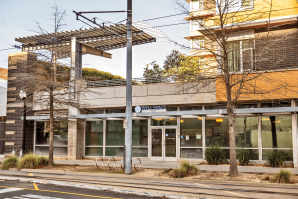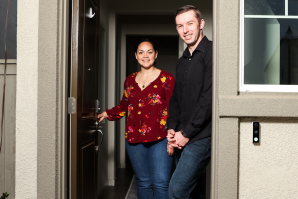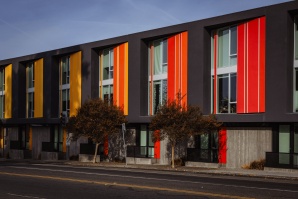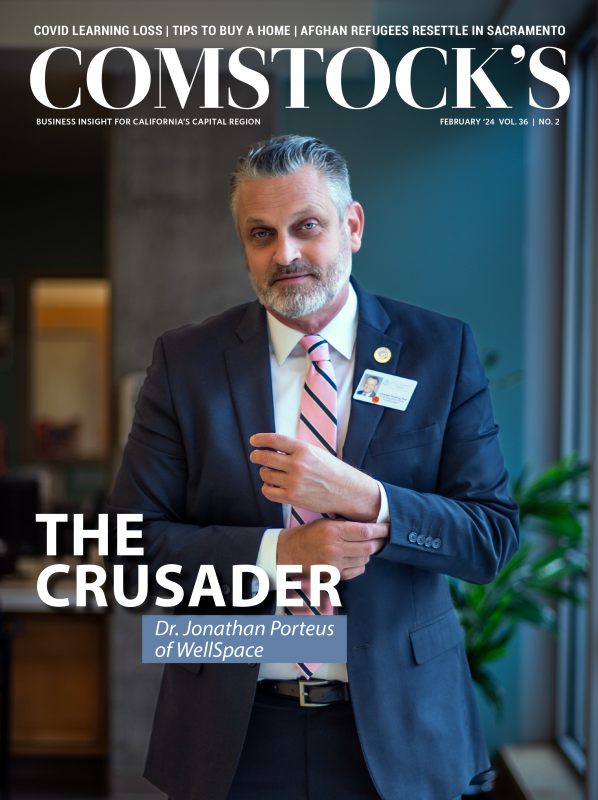Two years ago, a study by Stanford and Harvard universities confirmed the fears California parents had about the toll that lockdowns and virtual classrooms were taking on their children’s learning outlook: It found that statewide, students lost four months of math progress and a month in reading progress between the start of the pandemic and the end of 2022. Has that picture improved? School administrators are going into 2024 armed with a new survey that indicates learning loss remains an issue of “deep concern” to 75 percent of California educators — and there are specific reasons why.
The latest report was compiled by Hanover Research and the educational technology company Instructure. It surveyed 378 teachers and campus-level administrators across California, logging its data as recently as June of 2023. One of the most eye-opening findings was that nearly half of teachers were unhappy with how their student assessments were being provided. And that matters since the authors of the report stress that “assessment serves a pivotal role in diagnosing, mentoring and addressing learning loss.”
The term assessment can have different meanings within education. California mandates that every K-12 school put certain grades through the Smarter Balanced Summative Assessments tests at the end of the year, measuring how students are faring with Common Core State Standards around math and English language arts. But calculating the data for millions of summative tests generally means that teachers get the results after their classes end, rendering them useless for helping individual students.
Many school districts navigate that disadvantage by contracting with education tech companies to administer interim assessment tests throughout the year, with those results being provided to the teachers, in theory, fast enough to incorporate the results into classroom dynamics. But districts have to take the initiative to go that route, a reality that’s manifested itself in a patchwork of strategies across California. The new report from Instructure indicates that not all of them are working out as districts had hoped.
Given that experts generally agree students were harmed in large numbers by isolation and anxiety during the pandemic — and that they continue to struggle with the fallout of those burdens as part of the learning loss phenomenon — ongoing questions about interim assessment strategies have become part of a larger conversation about righting the education ship. But so too have broader concerns about students’ mental health.
“In our county, with all of the districts, this is top of mind,” says David W. Gordon, superintendent of the Sacramento County Office of Education. “The learning loss is real. But the fix for it is much more complicated than it would seem on the surface.”
When it hurts to look back
In Sacramento, the lockdowns’ toll on some students came into startling focus just three weeks into the ordeal. Then-Sacramento City Councilwoman now state Sen. Angelique Ashby announced during a city council meeting, as she fought back tears, that two students at Natomas Unified School District had taken their lives on the same day. She and Mayor Darrell Steinberg urged the community to be vigilant about a potential mental health catastrophe underway with area youth. Since then, jarring findings have rolled in. By February of 2021, Gaggle, a major company in school safety tech, analyzed data that it had access to from more than 4.5 million K-12 students across the nation: It identified an 83 percent increase in the volume of threats of suicide or self-harm among students over the previous year, tracking directly with the timeline for school lockdowns.
Three months later, Gov. Gavin Newsom announced a funding plan to assist K-12 campuses with safely reopening. Since then, researchers have focused on understanding how the mental health stressors on students, coupled with the drawbacks of virtual learning, have impacted the prospects of students moving forward.
But there was an immediate obstacle complicating that understanding. In 2020, Newsom decided to cancel all standardized testing in the state for K-12 because he thought it couldn’t be accomplished safely. That meant the same education tech companies providing interim assessments for districts — or at least the districts that opt to use them — were the only avenue that existed to do any meaningful testing that year. Those various service providers have since continued to be a frontline asset for trying to gauge learning loss.
Yet, as the new survey from Hanover Research and Instructure suggests, not all of these companies are created equally. The report states that while “assessment data is most valuable when it’s timely and actionable,” only 29 percent of teachers said they received their assessment findings “always on time.”
When the question was rephrased to ask teachers if they received their data “often on time,” the results were better but still not encouraging: Only 42 percent said they often got their assessments when they needed them. In Gordon’s view, this underscores how important it is for districts to carefully research which education tech companies they’re going to do business with.
“It’s well known that the standard is, if a child is not able to read by Grade 3, he or she is in a lot more trouble than if you’d caught it earlier,” Gordon explains. “So I think the concern on the part of teachers is warranted; but the districts that do a really good job with these interim assessments, they will be viewed as something that helps the teachers do their jobs. … Most of our districts do interim assessments. They’re prepared by different companies, and so you have to look for a good product.”
For Colleen Crowe, a 30-year veteran teacher at Rocklin High School, the net impacts of learning loss can’t be understated. Crowe teaches American government and economics at a fairly well-resourced campus; and yet what she has observed in the last few years has been genuinely worrying her.
“When it comes to ‘deep concern’ about learning loss, I would say that I’m in that category,” Crowe admits. “The reading capability of students — and I only teach seniors who I’m seeing at the end of their public school experience — is the lowest it has ever been. Specifically, their reading comprehension. … The pandemic is part of it, in that kids for almost two years basically weren’t held to any standards. They kind of were just passed along.”
Sally Pierce, a substitute teacher who’s worked in three counties, has spotted similar trends in various districts and classrooms she’s taught in.
“It’s very obvious how academically behind the kids are,” notes Pierce, currently subbing on Amador County campuses. “Compared to when I subbed in 2019, before COVID, it also feels like the kids just don’t care anymore.”
Searching for solutions
From Gordon’s perspective, Sacramento County schools have largely recognized that the classroom chaos of the last few years intensified pre-existing mental health issues for a great many students, fueling everything from learning loss to current challenges with chronic absenteeism (a trend that several teachers who spoke to Comstock’s for this article mentioned).
“For a young child or adolescent, being isolated is not normal — and it’s often damaging,” Gordon reflects. “That’s not going to be solved by a tutor, that’s only going to be solved by the kids coming back and rebuilding their relationships. And not just with their friends. For some kids from dysfunctional families, the teachers and school staff might have been the only positive adult relationships they had in the first place. And those relationships were suspended or severed. And this is where you saw a lot of these mental health issues come to the fore.”
According to Gordon, Sacramento schools have responded by bolstering a teacher program on social-emotional learning by adding county mental health clinicians to every campus. He said that the Sacramento County Office of Education and school districts are also working to create employment pipelines that incentivize more young adults to become teachers and mental health professionals. The ranks of both will need to be swelled in order to continue tackling learning loss. Finally, Gordon says that Sacramento educators are focusing on how best to rebuild the quality of instruction in reading, language arts and literacy in their classrooms.
That last point is one that also resonates in Placer County. Crowe stresses that she and her fellow teachers at Rocklin High School have been zeroing in on this issue.
“There definitely needs to be a return to more literacy,” says Crowe. “In our social studies department, we’ve actually decided as a group that we’re actually going to work on literacy as well. Because it’s not just the language arts teachers who should be teaching you to read and comprehend and analyze. We’re going to make an effort to try to do that too.”
There are similar efforts underway around California, and one reason to think they’ll work can be found in the Instructure survey: In short, most teachers love their jobs and are eager to do the best they can. The report found that 88 percent still enjoy the classroom, and 83 percent look forward to going to work. But even with the strength of that enthusiasm, educators like Crowe, Pierce and Gordon believe that the results won’t be instantly observable. Gordon, for one, agrees with those who have called the pandemic a disruption that nothing compares to in living memory.
“There will be no fix to compare it to either,” he echoes. “We have to evolve that as we go.”
Stay up to date on business in the Capital Region: Subscribe to the Comstock’s newsletter today.
Recommended For You

The Crusading Doctor
Sacramento-based WellSpace Health thrives with a unique approach to homeless and mentally ill patients
The homelessness crisis has seemingly coincided with a lack of sufficient behavioral health resources. Organizations like WellSpace could be well-positioned to take on a growing share of this vital work.

How to Save a Life
WellSpace’s suicide prevention hotline serves a 32-county region
WellSpace Health has been running its suicide prevention hotline for 70 years. Started in 1953, the hotline was expanded in July 2022 to include mental health crises as the new national 988 crisis hotline number was implemented.

Is the Housing Market Stuck?
High interest rates and low inventory are disrupting the housing market, but there are options for frustrated homebuyers
First-time homebuyers are feeling priced out of the market and fear they may have to rent for the foreseeable future. Homeowners who want to sell are wary of parting with their 3 percent interest rate. As a result, low inventory coupled with high interest rates has made for a very tight housing market.

Photo Essay: Afghans Resettling in Sacramento
The Capital Region is home to more than 10,000 Afghan refugees who fled the Taliban. Comstock’s brings you a few of their stories.

The Evolution of Aesthetics
Women and men have a variety of ways to look their best in the Capital Region
When it comes to “having a little work done,” it’s all about perception. “I was actually one of those people who thought they would never do Botox in their life,” says Shawna Chrisman, nurse practitioner and founder of Destination Aesthetics. “I just wanted to age gracefully.” But a product called Lattise — which she calls her “gateway” — changed her perspective on what that means.

Residential Renaissance
New affordable apartment complexes offer appealing amenities such rooftop terraces, courtyards and shared community spaces
Some of the most exciting architecture being designed and built in the Capital Region today is multifamily residential. Attractive, amenity-rich condominiums, apartments and duplexes are popping up everywhere, proving that single-family luxury homes aren’t the only drool-worthy dwellings on the real estate market.

The Delta in Decline
Wildlife and businesses in the Sacramento-San Joaquin Delta are suffering from lack of fresh water
The life cycle of a salmon, so the story goes, is a heroic journey. The fish emerge from fertilized eggs in a river bed, swim to the ocean where they spend most of their lives and return to give birth in the exact place where they were born.




